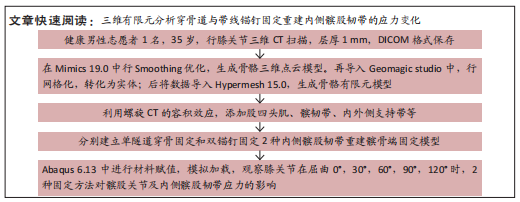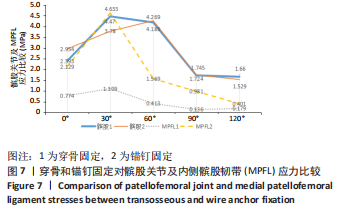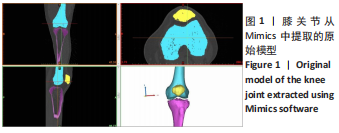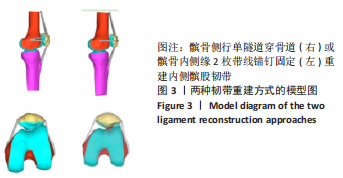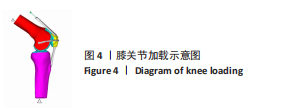[1] 周慧文,包呼日查,王永祥,等.青少年急性髌骨脱位治疗进展[J].内蒙古医学杂志,2016,48(3):326-329.
[2] 张志光,毕树雄,胡鹏,等.髌骨脱位治疗的研究进展[J].中华损伤与修复杂志(电子版),2018,13(2):142-145.
[3] JAQUITH BP, PARIKH SN. Predictors of recurrent patellar instability in children and adolescents after first-time dislocation. J Pediatr Orthoped. 2017;37(7):484-490.
[4] LEWALLEN L, MCINTOSH A, DAHM D. First-time patellofemoral dislocation:risk factors for recurrent instability. J Knee Surg. 2015;28(4):303-309.
[5] TSCHOLL PM, ANTONIADIS A, DIETRICH, TJ, et al. The tibial-tubercle trochlear groove distance in patients with trochlear dysplasia: the influence of the proximally flat trochlea. Knee Surg Sports Traumatol Arthrosc. 2016;24(9):2741-2747.
[6] LIEBENSTEINER MC, DIRISAMER F, BALCAREK P, et al. Guidelines for Treatment of Lateral Patella Dislocations in Skeletally Mature Patients. Am J Orthop (Belle Mead NJ). 2017;46(2):E86-E96.
[7] NOMURA E, INOUE M, OSADA N. Anatomical analysis of the medial patellofemoral ligament of the knee, especially the femoral attachment. Knee Surg Sports Traumatol Arthrosc. 2005;13(7): 510-515.
[8] ELLERA GOMES JL. Medial patellofemoral ligament reconstruction for recurrent dislocation of the patella: a preliminary report. Arthroscopy. 1992;8(3):335-340.
[9] 马辉,王国栋,马珊,等.内侧髌股韧带重建术治疗髌骨脱位的研究进展[J]. 中国医师进修杂志,2020,43(8):758-761.
[10] 彭晨健,孙鲁宁,袁滨,等.复发性髌骨脱位治疗中内侧髌股韧带重建术的研究进展[J].中华老年骨科与康复电子杂志,2019,5(3):179-183.
[11] 张勇,程飚,杨林.关节镜辅助下内侧髌股韧带重建术治疗髌骨脱位股骨侧止点定位方法研究[J].中国修复重建外科杂志,2020,34(10):1233-1237.
[12] 詹红伟,耿彬,张小辉,等.单半隧道、双半弯形隧道和缝线锚钉固定重建内侧髌股韧带治疗髌骨脱位的疗效比较[J].中华创伤杂志,2022,38(10):889-896.
[13] 梁兴森,余正红,李义凯.髌股关节稳定机制的解剖学及生物力学研究现状[J].颈腰痛杂志,2008,29(3):260-262.
[14] SIEROŃ D, JABŁOŃSKA I, NIEMIEC P, et al.Correlation of patellofemoral chondromalacia and body mass index (BMI) in relation to sex and age analysis of 1.5T and 3.0T magnetic resonance (MR) images using the outerbridge scale.Med Sci Monit. 2022,28:e937246.
[15] 赵金忠.膝关节重建外科学(第二版)[M]. 郑州:河南科学技术出版社,2015: 220.
[16] 国家老年疾病临床医学研究中心(湘雅医院),中华医学会骨科学分会关节外科学组.中国髌股关节骨关节炎诊疗指南(2020年版)[J].中华骨科杂志, 2020,40(18):1227-1234.
[17] GROOD ES, SUNTAY WJ, NOYES FR, et al. Biomechanics of the knee-extension exercise. Effect of cutting the anterior cruciate ligament. J Bone Joint Surg Am. 1984;66(5):725-734.
[18] TUXOE JI, TEIR M, WINGE S, et al. The medial patellofemoral ligament:a dissection study. Knee Surg Sports Traumatol Arthrosc. 2002;10(3):138-140.
[19] STEENSEN RN, DOPIRAK RM, MAURUS BP. A simple technique for reconstruction of the medial patellofemoral ligament using a quadriceps tendon graft. Arthroscopy. 2005;21(3):365-370.
[20] 王志学,姬振伟,吴鹏,等.髌股关节不稳定的截骨治疗[J].中国骨与关节杂志,2022,11(11):842-847.
[21] 冯超,郭源.大收肌腱移位双束重建内侧髌股韧带联合远端重排治疗儿童复发性髌骨脱位[J].中华小儿外科杂志,2020,41(5):450-455.
[22] 林潮盛,刘雨微,朱伟民,等.内侧髌股韧带重建:移植物单双束选择、髌骨及股骨插入点的固定技术[J].中国组织工程研究,2021,25(26):4217-4222.
[23] BERTON A, SALVATORE G, ORSI A, et al. Lateral retinacular release in concordance with medial patellofemoral ligament reconstruction in patients with recurrent patellar instability: A computational model. Knee. 2022;39:308-318.
[24] 周超,王超,韩宝鑫,等.两种内侧髌股韧带重建髌骨侧固定方式的比较[J].中国矫形外科杂志,2022,30(22):2028-2033.
[25] DAHM F, SYED HM, TOMESCU S, et al. Biomechanical comparison of 3 medial patellofemoral complex reconstruction techniques shows medial overconstraint but no significant difference in patella lateralization and contact pressure. Arthroplasty. 2023,39(3):662-669.
[26] AMIS AA, FIRER P, MOUNTNEY J, et al. Anatomy and biomechanics of the medial patellofemoral ligament. Knee. 2003;10(3):215-220.
[27] DECANTE C, GEFFROY L, SALAUD C, et al. Descriptive and dynamic study of the medial patellofemoral ligament (MPFL). Surg Radiol Anat. 2019;41(7):763-774.
[28] 魏立伟,高万旭,秦娜,等.2种MPFL重建术式治疗复发性髌骨脱位的疗效对比[J].中国骨与关节损伤杂志,2017,32(12):1249-1251.
[29] MOUNTNEY J, SENAVONGSE W, AMIS AA, et al. Tensile strength of the medial patellofemoral ligament before and after repair or reconstruction. J Bone Joint Surg Br. 2005;87(1):36-40.
[30] 孙睿,段茗一,刘蕈萁,等.经骨缝合与缝合锚钉技术在内侧髌股韧带双束重建术中应用的比较研究[J].中国修复重建外科杂志,2022,36(1):45-51.
[31] 任民,甄平,李慎松,等.锚钉-可吸收钉固定法治疗复发性髌骨脱位的经验及教训[J].中国中医骨伤科杂志,2015,23(3):57-59.
[32] 魏鑫鹏,颜廷卫,唐延军.股内侧肌悬吊髌骨单锚钉双束解剖重建内侧髌股韧带[J].中国矫形外科杂志,2019,27(12):1137-1140.
[33] SALVATORE G, BERTON A, ORSI A, et al. Lateral release with tibial tuberosity transfer alters patellofemoral biomechanics promoting multidirectional patellar instability. Arthroscopy. 2022;38(3):953-964.
[34] WATTS JC, FARROW LD, ELIAS JJ. Anatomical characteristics contributing to patellar dislocations following MPFL reconstruction: A Dynamic Simulation Study. J Biomech Eng. 2023;145(4):041003.
[35] 蔡国锋,王旭,宁梓文,等.伸膝装置联合重排治疗复发性髌骨脱位的三维有限元分析[J].中国修复重建外科杂志,2022,36(5):573-581.
[36] WIERER G, WINKLER PW, POMWENGER W, et al. Transpatellar bone tunnels perforating the lateral or anterior cortex increase the risk of patellar fracture in MPFL reconstruction: a finite element analysis and survey of the International Patellofemoral Study Group. Knee Surg Sports Traumatol Arthrosc. 2022;30(5):1620-1628.
[37] JACKSON GR, TUTHILL T, GOPINATTH V, et al. Complication rates after medial patellofemoral ligament reconstruction range from 0% to 32% With 0% to 11% recurrent instability: a systematic review. Arthroscopy. 2023;39(5):1345-1356.
[38] 殷浩,陈光,李燕,等.背侧克氏针增强AO C型桡骨远端骨折尺背侧骨折块稳定性的有限元分析[J].中国组织工程研究,2023,27(31):4921-4925.
[39] 殷浩,周恩昌,潘政军,等.4枚空心钉与3枚空心钉结合支持钢板内固定治疗PauwelsⅢ型股骨颈骨折的有限元分析[J].中国组织工程研究,2019,23(32): 5133-5137.
[40] MITANI G, SERIGANO K, TAKAGAKI T, et al. MPFL reconstruction combined with a modified Elmslie-Trillat procedure for recurrent patellofemoral instability. J Knee Surg. 2023. doi: 10.1055/a-2001-6565.
|
